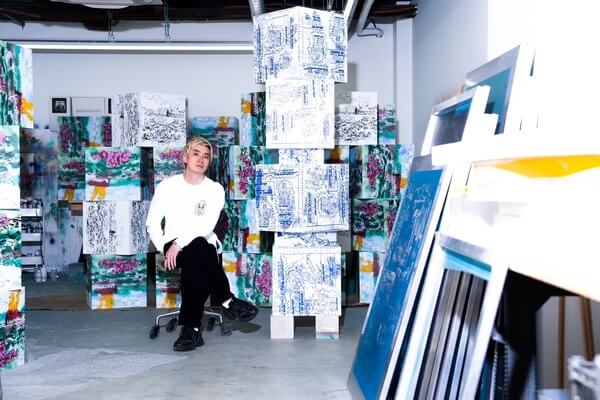
にいみのこれまでの仕事の多くは、資本主義社会のメディア産業において使い捨てられた視覚的なイメージをブリコラージュし、絵画言語へと変換することで「使い終わった」ものであるクリエイティブに新たな価値を付与し、アクティベートしようとする試みであり、かつその状況を生み出し続ける現代の経済システムに反抗するものでした。「数値化され、最適解を追い求める経済活動を中心とする私たちの時代にとって、創造力はその駒と成り下がってしまう場合がある」と本人は語りますが、彼の関心は常に一貫してマーケティングのために行使されるクリエイティビティと、同様の目的下において生成・使用・廃棄されたクリエイティブに向けられています。
したがって、にいみの実践方法もまた、必然的にメルツ絵画のように「使い去られたイメージ」を素材とすることから始まります。漫画、雑誌、広告等における意図的に生み出され、特定の目的下で使用され、そして廃棄されたイメージを集め、再構成し、それによって一つの画面を構成する制作上のスタンスはシミュレーショニスト的なスタイルを感じさせますが、とはいえ彼はそれら過去の美術動向をペダンティックに模倣するアーティストではなく、彼はあくまでも使用・廃棄をリピートし続ける今日のクリエイションをめぐる物語における、作り手の虚しさ、怒り、酷使される人間の創造力に目を向けている点において、その創作は決定的に区別される性質を備えていると言えるでしょう。
アーティストとしてのキャリアが始まる以前、彼自身もまた長らく広告制作のプレイヤーの一人でした。
彼が創作において常に意識する「消費され、酷使されるクリエイターの心情」とは彼自身の体感と記憶であり、時としてにいみのアートワークにおける図像の使い方はストリート的、あるいはポップアート的な今日のモードの影響も見えますが、それらはむしろ広告制作、あるいは「消費されたクリエイティブ」の当事者が持ちうる、マーケティング手法のコンテクストを露悪的に、逆説的に使用しているものと読むべきでしょう。
「効果測定の精度が昔より遥かに高い今日において、クリエイターとは安定した成果を出すイメージを生産する機械であり、個人の創造性が抑圧された状況に身を置くことを強いられる」という彼の言葉は、その創作活動全体が、単に引用とコラージュによる視覚イメージの造作ではなく、今日の私たちの社会に実在する、ある種の人々の心情を押しはかることを示唆させるベクトルがあることを、私たちに示しています。
にいみが ( 今のところは ) 絵画で行っている試みは、広漠としたリアルとデジタルの二重的な世界で死に絶えていくクリエイティビティを悼むことであり、それを生み出しているシステムそのものを侮蔑することなのです。
Most of Niimi’s work to date has been an attempt to activate the creative process by transforming discarded visual images into a pictorial language through assemblage, It was also a rebellion against the contemporary economic system that continues to create such a situation.
As Niimi says, “In our age of quantified, optimization-driven economic activity, creativity can be a pawn,” and his concern has always been consistently with creativity exercised for marketing purposes and with creativity generated, used, and discarded for similar purposes. The creative power can be a pawn in our time.
Therefore, Niimi’s method of practice also inevitably begins with the use of “used images” as material, as in the Merz paintings. His production stance of collecting, reconstructing, and composing a screen from intentionally created, used for specific purposes, and discarded images from manga, magazines, advertisements, and other media, has a simulationist politeness to it, although it is clear that Niimi is not a pedantic imitator of these past art trends. However, the decisive distinction lies in the fact that Niimi is not an artist who pedantically imitates past art trends, but rather focuses on the lyricism of the narratives surrounding today’s creations, which continue to repeat themselves in use and disposal.
Before his career as an artist began, he himself had long been a player in advertising production.
The “feelings of creators who are consumed and overused” that he values are his own experiences and memories, and although the use of iconography in Niimi’s artwork at times shows the influence of a street or pop art sensibility, it should be read more as an explicit and paradoxical use of the context of advertising production or “consumed creativity” and marketing techniques that can be owned by the parties involved. However, they should be read as a paradoxical use of the context of marketing techniques that the parties involved in advertising production or “consumed creativity” may have, in a devious way.
His words, “Today, with far greater precision in measuring effectiveness than in the past, creators are machines that produce images with stable results, forcing individuals to place themselves in a situation where their creativity is suppressed,” indicate that the entire creative process is not simply the figuration of visual images through quotation and collage, It shows us t hat there are vectors that suggest to us that he pushes the sentiments of certain people that are real and present in our society today. Niimi’s attempt (for now) with her paintings is to mourn for the dying creativity in the nebulous, dualistic world of real and digital, and to scorn the very system that produces it.
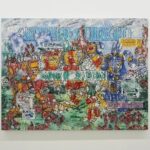
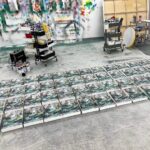
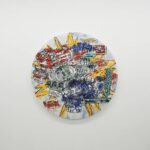
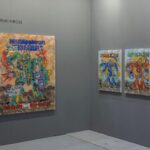
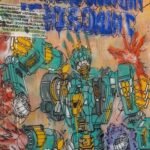

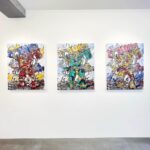
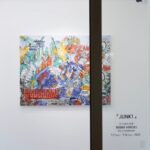
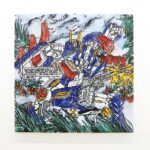
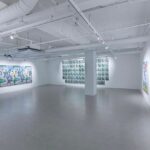
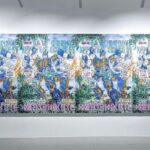
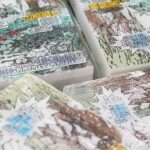
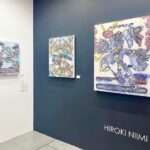

NIIMI HIROKI
Born in 1985, Aichi, Japan
Graduated from Tama Art University
CV
2025
「Art Fair Tokyo 2025」(SH GALLERY / Tokyo, Japan)
2024
「Your Marvelous World, and Art Group Exhibition 」 」(SH GALLERY SEOUL, Seoul, Korea)
「Donʼt consume creativity」 (GINZA SIX FOAM CONTEMPORARY, Tokyo,
Japan)
「Mob power」 (GINZA SIX, Tokyo, Japan)
Kiaf SEOUL 2024 (COEX, Seoul, Korea)
「Journey」 (SH GALLERY, Tokyo, Japan)
「ART CENTRAL solo presentation」 / Hong Kong
ASTER Select Artist 2024 / Kanazawa Japan
group exhibition “faces” / BangKong
2023
「Solo exhibition “Repeat”」 (SH GALLERY SEOUL), Seoul, South Korea 「“ROCKET PUNCH” 」(Shibuya PARCO / Mid-Century MODERN ) Tokyo, Japan 「” KIAF Seoul 2023”」(COEX 1F, Hall A&B) Seoul, South Korea
「Group exhibition “Neo Japan: Pop Art Explored ”」(Artspace Helutrans)Singapore 「Solo exhibition “JUNK!”」(SH GALLERY TOKYO), Tokyo, Japan
「SH GALLERY SEOUL opening exhibition」(SH GALLERY SEOUL), Seoul, South Korea 「Art fair ART FAIR TOKYO 2023」Tokyo, Japan
「Group exhibition “Untitled”」(SOM GALLERY) Tokyo, Japan
2022
「Group exhibition 時代の一片/ Piece of the times」
(GINZA ATRIUM, Tsutaya, 6F, GINZA SIX.) Tokyo, Japan
「Solo exhibition Barcodes」 (MU GALLERY / TOKYO) Tokyo, Japan 「Group exhibition MEGA」 (SH GALLERY/TOKYO) Tokyo, Japan
「Art fair One Art Taipei」 (Shukado Gallery/ Taiwan)
「Art fair MEET YOUR ART FESTIVAL 2022 ‘New Soilʼ」 Tokyo, Japan 「Art fair Art Tainan」 (333gallery/Taiwan)
「Art fair URBAN BREAK」 (GALLERY JINSUN/Korea)
Awards
Moscow International Biennale-Golden Bee Winner
Selected for the Mexico International Biennale
WorldBiennial Exhibition PostersSelected
MIDTOWNaward Design category prize
Collection / 所有
UESHIMA COLLECTION
Yusaku Maezawa/ 前澤友作
